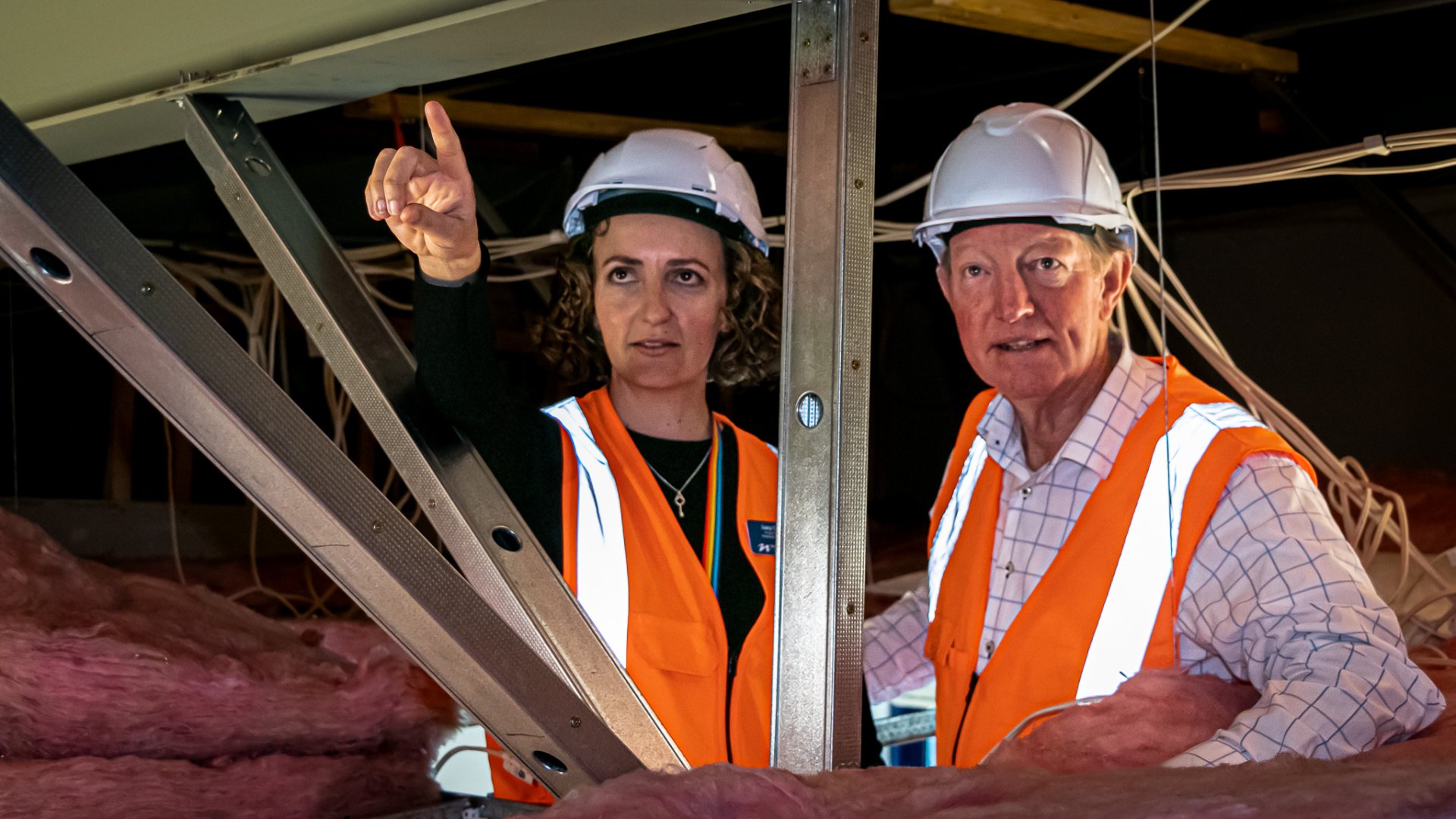Library Taskforce recommends $1.4m urgent strengthening for Elma Turner Library
21/11/2022 4:36am
On Thursday 24 November, Nelson City Council will consider a recommendation from the Library Reopening Taskforce to approve $1.4m to complete urgent strengthening work on Elma Turner Library to enable its full reopening next year.
Council closed Elma Turner Library on Thursday 9 June 2022 after an initial inspection found ceiling tiles in the building were much heavier (8kg – 11kg) than expected. Following urgent remediation work on the ceilings in two areas of the building, a part of the central library re-opened as a Pop-up Library on 25 July 2022.
While undertaking strengthening of the ceiling tiles for the Pop-up Library, Council simultaneously commissioned a Detailed Seismic Assessment (DSA) Report on the building's structure to assess what work would be required to re-open the remainder of the Elma Turner Library. This assessment was completed this month.
The structural DSA report shows that, while the majority of the building is between 40-60% of the New Building Standard (NBS) and therefore not considered earthquake-prone, the roof bracing system in the southern end (by Halifax Street) is rated at 30% NBS, below the 34% NBS threshold.
The Taskforce and library staff are keen to see the rest of Elma Turner Library strengthened and reopened to the public as soon as possible. To reduce the remedial work timeframes, strengthening work is planned in a phased manner, which means the Pop-up Library can remain open throughout the work period.
“We are working as quickly as possible to fix the ceiling tiles and structural issues so Nelson can return to enjoying use of the full library," says Taskforce lead and Nelson Mayor Nick Smith.
“The Library Reopening Taskforce was established at the first business meeting of the new Council on 10 November, and it met the next day. We received the final seismic structural assessment report on 18 November. Council approval of the Taskforce recommendations this Thursday will enable physical work to start next week.
“The first phase of work will take about seven weeks and will enable the full riverfront area to be opened in January. The second phase will allow further expansion in April. The final phase which includes structural strengthening will allow for the full library to reopen in July.
“The seismic strengthening work to the tiles and structure of the library is consistent with the recommendations by engineering experts. It upgrades the building from high risk to medium risk and means the library will not be deemed an earthquake prone building.
“Although the legislation allows 25 years to upgrade, the Council is taking a conservative approach to seismic risk by choosing to do this work as quickly as possible.
“This proposal strikes an appropriate balance so we can make good use of this facility for several more years, making it as safe as practicable but without spending an excessive amount on a building that in time will need replacement.”
Library staff have been working very hard to maintain their usual high level of service to the public, and Manager Libraries Sarina Barron says they are viewing this time as an opportunity to improve and innovate what the library can deliver.
“We’re really excited to have a fully accessible Elma Turner Library building on the horizon. Staff and customers have had to be quite resilient throughout this process. This is our chance to have a think about how we make the library space even better and more inviting, whether that’s refreshing the layout or exciting new programmes and collections. We can’t wait to have our doors fully open again.”
Frequently Asked Questions
What is a Detailed Seismic Assessment (DSA) Report and why did Council request one?
Broadly speaking, a DSA is a detailed, modelled assessment of the likely seismic behaviour of a building. When doing a DSA, engineers will assess the vulnerability of all critical elements in the building (such as columns, floors, parapets, and heavy exterior cladding) that could present a significant life safety hazard during an earthquake. Each of the elements gets a score expressed in terms of the percentage of New Building Standard (% NBS) achieved. % NBS is an index used to characterise the expected seismic response of a building to earthquake shaking. It helps identify buildings that represent a higher seismic risk than a similar new building, built to current Building Code standards (implemented following the Christchurch and Kaikōura earthquakes).
Having accurate, externally reviewed data helps us make informed decisions, which is especially important when there is the potential of significant impact to the public.
Did Council really have to close the building? Couldn’t the library have stayed open?
While there was no legal obligation to close, Council was not prepared to accept the level of risk when it came to a high-traffic public facility with a number of vulnerable users. The DSA confirms this approach. Council, in its responsibility as a landowner, absolutely must make the building safe for staff and the community who need to use it now and in the future.
MBIE issued new guidance on seismically vulnerable buildings in July 2022 advising that most seismically vulnerable buildings are not imminently dangerous and can remain occupied while seismic remediation work is planned, funded and undertaken. The building could be occupied in its current state; however, we are opting to take a conservative approach by keeping Elma Turner Library closed while this work takes place. This also ensures work can be completed in business hours and done quickly.
Can I read the DSA report?
Yes, we have made the report available to the public online here.
What does the strengthening work consist of?
- The ceiling tiles need to be clipped securely to the ceiling grid.
- The ceiling grid needs lateral bracing to the roofing structure to prevent movement during an earthquake.
- The ceiling tile system needs to be properly secured at the edges with floating edge pieces to enable some movement during an earthquake, but without failing.
- The structural connections between the exterior walls and the roof bracing system in the southern end of the building (next to Halifax Street) need to be redesigned and strengthened.
How long will it take?
The work is being done in two stages.
- Stage One raised the Children’s area and the Activity Room to 67% NBS. This work has been completed.
- Stage Two will cover the remainder of the Library. This work has been divided into Phase 1, Phase 2a, Phase 2b and Phase 2c. Phase 1 and Phase 2a will be completed first as the work is limited to the ceiling tiles and design solutions are appropriate for a discretionary exemption to a building consent.
Phased approaches
- Phase 1 will expand the area of the Pop-up Library into the Maitai River side of the building. Completion of Phase 1 is currently predicted to be mid-January 2023.
- Phase 2a will cover the central public area, the entrance foyer and the returns room, and is scheduled to be completed by the end of summer 2023. Phase 2a may not open to the public until after Phase 2b (detailed below) is completed, as space will be required for storage of library collections during other construction.
- Phases 2b and 2c include the structural work in the library’s southern section and staff areas. At this stage we do not have a set timeframe for completion, as the building consent and scope of construction required will depend on the detailed engineering design. Construction of Phases 2b and 2c will take approximately 10 weeks from the date a building consent is granted.




